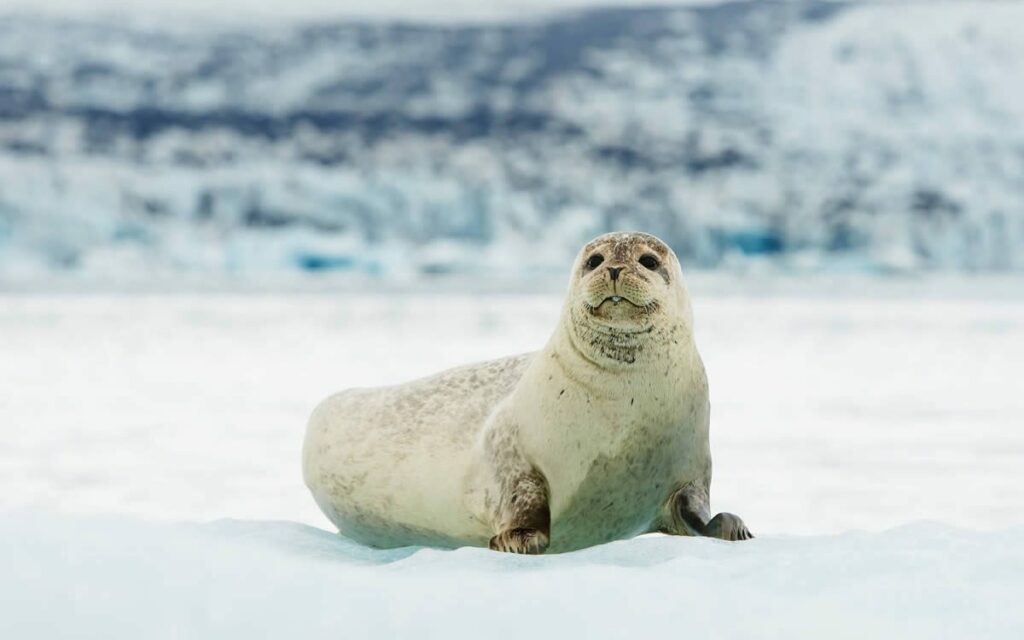Bearded Seal
The bearded seal (Erignathus barbatus), also called the square flipper seal, is a medium-sized pinniped that is found in and near to the Arctic Ocean. It gets its generic name from two Greek words (eri and gnathos) that refer to its heavy jaw. The other part of its Linnaean name means bearded and refers to its most characteristic feature, the conspicuous and very abundant whiskers. When dry, these whiskers curl very elegantly, giving the bearded seal a "raffish" look.

Bearded Seal
Latin name: Erignathus barbatus
Other common names: Square-flippered seal; the Inuit name is ugjuk or oogrook
Distinctive features: Thick bristles or “beard” on its muzzle. It also has square-ish front flippers; adults have a greyish-brown pelt, darker on the back.
Size: 2.1– 2.7 m in length; 200–400 kg weight; cows are generally larger than bulls.
Longevity: 25–30 years
Diet: Using their whiskers as feelers, bearded seals feed on the ocean floor, targeting species such as crabs, clams, squid, and benthic fish.
Population: Unknown (IUCN states “no evidence of a current decline”).
IUCN Status: Least concern; population trend: unknown.
Range
Bearded seals have a circumpolar Arctic and sub-Arctic distribution. In Canada they are found throughout Hudson Bay and eastward, along the coast of Labrador to northern Newfoundland. Vagrants have been reported in the Gulf of St. Lawrence and elsewhere.
Life Cycle
Pups are born on drifting ice floes, usually in shallow water, in May (in the Canadian Arctic; earlier elsewhere in their range). Pups first swim just hours after birth; by the time they are weaned, at about 24 days, they are spending half of their time in the water. The pups, relatively large when born, grow at an average rate of 3.3 kg per day in those first three to four weeks.